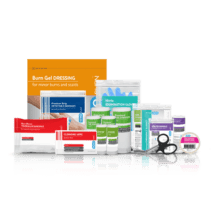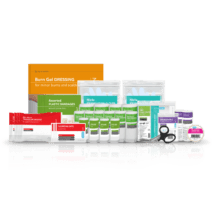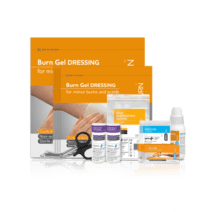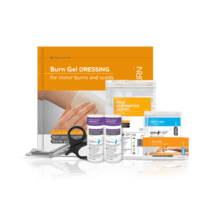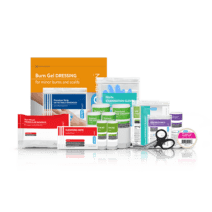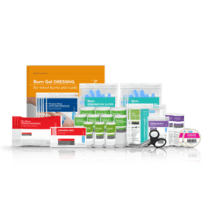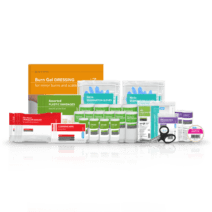About First Aid Kits
First aid kits are used to treat minor to more severe wounds, depending on the type of first aid kit you have and the industry you work in. They typically include assorted plasters, bandages and gloves to offer a treatment solution for cuts and surface wounds. First aid kits can also cater to industry-specific requirements and include strapping tape for joint support or tourniquets for higher risk workplaces.
What is a first aid kit?
A first aid kit is normally housed within a fabric case or hard container and includes a range of consumables designed to treat minor to more severe injuries. The contents of a first aid kit offer a treatment solution for various risks, ranging from slips to cuts.
It’s possible to get bespoke first aid kits that cater to a set industry, such as catering, to meet specific requirements. Likewise, workplace first aid kits should also cover any potential risks covered under a risk assessment, ensuring a treatment solution is available.
What does a first aid kit include?
According to Health and Safety (First Aid) Regulations 1981, a workplace first aid kit must include the following items as a minimum requirement:
- First aid general guidance leaflet
- Individually wrapped sterile plasters in assorted sizes
- Sterile eye pads
- Individually wrapped triangular bandages
- Safety pins
- Medium and large wound dresses that are individually wrapped, sterile and unmedicated
- Disposable gloves
Many industries have different risks, such as burns or slips, that may require additional items to be included in a first aid kit. You might often find things like strapping tape, microporous tape and sterile gauze added to meet these requirements.
Kits for home or personal use may also include specific items, such as hypo-allergenic plasters and CPR face shields.
Why are first aid kits important?
Whether they’re designed for home, personal or workplace use, first aid kits are crucial. Not only do they ensure compliance with Health and Safety requirements, but they also offer immediate response when an incident occurs. Small grazes, larger cuts and broken bones can all be aided with a first aid kit before expert medical help arrives.
Legal requirements of first aid kits
Under HSE regulations, workplaces must ensure their first aid kit meets the above criteria as a minimum requirement. However, workplace first aid kits must also consider their risk assessments first. Essentially, if your place of work is higher risk, you’ll need the right first aid consumables on-site and within your kit. Without these, your first aid kit is not adequate for use. Most British Standard (BS) 8599 first aid kits are a good place to start looking.
Although there are legal requirements for workplaces, there are no rules for personal and household first aid kits. It’s a good idea to ensure all contents are up-to-date and in good condition before use, and that you have everything you need.
Where should first aid kits be located?
At work, your first aid kit should be stored above ground level, either on a wall bracket, in a cupboard or stored on a countertop. It’s best stored in areas where staff, visitors and contractors can easily access it if they are injured. Staff should also know where the first aid kit is located, which can be covered in policy documents.
At home, you might store your first aid kit in a bathroom or kitchen area. If you have one, it should be easily locatable for your family to find and use. Likewise, one stored in a domestic car could be found in the glove compartment or other storage areas, like seat nets or door pockets.
Who needs first aid kits?
Workplaces must comply with HSE legislation, thereby ensuring they have the right first aid solution. Otherwise, for home and personal use, it’s advisable to have a first aid kit if you live with vulnerable individuals, like elderly relatives or children.
Ideally, everyone should have access to a first aid kit. Of course, it is a legal requirement for workplaces to house a first aid kit that offers adequate support to employees. However, there’s no requirement for home or personal kits.
Maintenance of a first aid kit
Most items in a first aid kit will have an expiry date, these will depend on the product and materials used. Items like gloves and sterile dressings must be disposed of after use, meaning you may have to order more if your stocks are low. Likewise, if your case is broken or damaged in any way, this will also need replacing as it can compromise the items inside.
Fortunately, there are options to help you manage expiring stock, such as refilling schemes.
Summary
For workplaces, first aid kits are an essential item that helps meet Health and Safety regulations whilst keeping employees safe. They offer treatment solutions for minor to severe injuries. First aid kits are also a good idea to store at home or on your person whilst driving.


